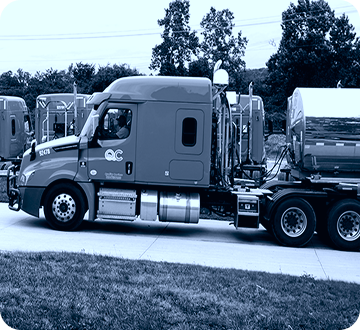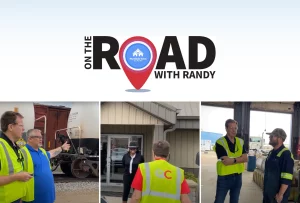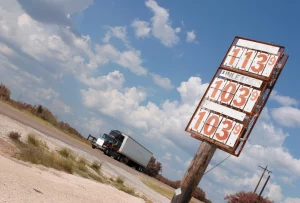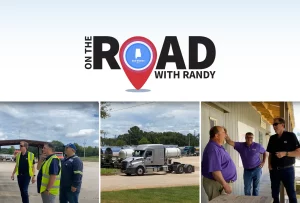Transporting hazardous materials (hazmat) poses significant risks to public safety, the environment, and property. Effective risk management helps to mitigate these dangers and ensure the safe transportation of hazardous substances.
This blog post will reveal the complexities of hazmat transportation, exploring the inherent risks, regulatory standards, best practices, and technological advancements to enhance safety in transporting hazardous materials.
Understanding Hazmat Transportation
Hazmat transportation refers to the movement of hazardous materials, substances, or transporting chemicals from one location to another. These are used via various modes of transportation, including road, rail, air, and sea freight. These materials pose inherent risks to human health, the environment, and property due to their potential for causing harm through chemical, physical, or biological means. Hazmat transportation involves strict regulations, specialized handling procedures, and risk management protocols to ensure these substances’ safe and secure transit while minimizing the potential for accidents, spills, or releases that could result in catastrophic consequences.
Risks Associated with Hazmat Transportation
Release/Spill Risks
Hazmat transportation carries the inherent risk of accidental release or spillage of hazardous materials during handling, loading, transit, or unloading. Spills occur due to equipment failure, human error, or environmental factors, posing immediate threats to human health, the environment, and property. Depending on the substance, spills may lead to chemical exposure, fire, explosion, or environmental contamination, necessitating prompt containment, cleanup, and mitigation measures to prevent escalation and minimize adverse impacts.
Fires and Explosions
Hazmat transportation introduces the risk of fires and explosions, particularly when transporting flammable, combustible, or reactive substances. External factors such as vehicle accidents, equipment malfunctions, or unauthorized activities can trigger ignition sources, leading to fires or explosions with catastrophic consequences. Inadequate storage, packaging, or handling practices increase the likelihood of ignition and escalation of hazardous events. Rigorous fire prevention measures, adherence to safety regulations, and emergency response preparedness are critical to mitigate fire and explosion risks and protect personnel, infrastructure, and the public.
Exposure and Contamination
Hazmat transportation exposes workers, emergency responders, and the public to hazardous materials. Direct contact, inhalation, or ingestion of these substances can result in chronic health effects, ranging from respiratory issues to chemical burns or systemic poisoning. Proper handling procedures, personal protective equipment (PPE), and decontamination protocols are essential to minimize exposure risks and safeguard personnel and communities.
Inadequate Communication
Communication failures or breakdowns can compromise the safety of hazmat transportation operations. Clear and effective communication is vital among all stakeholders, including shippers, carriers, drivers, emergency responders, and regulatory authorities. Inadequate communication can lead to misunderstandings, delays in response to incidents, or improper handling of hazardous materials, exacerbating risks and consequences. Robust communication protocols and training programs are essential to ensure timely and accurate information exchange, enhancing overall safety and risk management efforts.
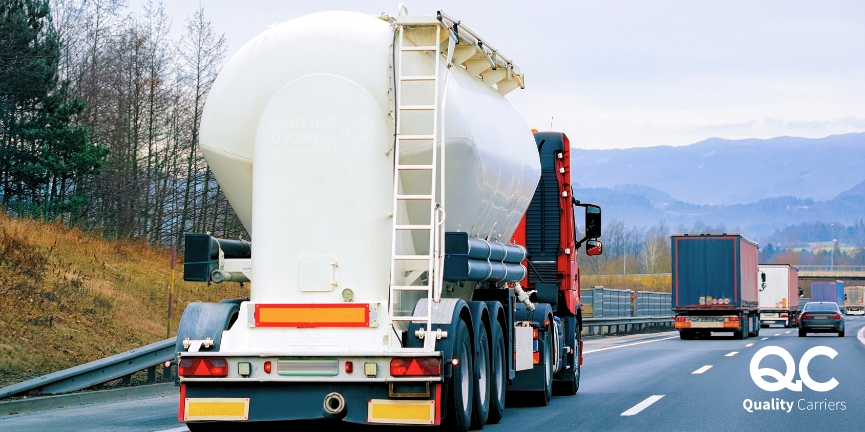
Risks Associated with Different Hazmat Transportation Modes
Road Transportation
Road transportation of hazardous materials presents unique risks due to the proximity of these materials to populated areas and other vehicles. Accidents, such as collisions or overturns, can result in spills, leaks, or fires, endangering nearby communities, the environment, and emergency responders. Factors like traffic congestion, adverse weather conditions, and inadequate infrastructure further compound these risks, highlighting the importance of driver training, vehicle maintenance, and emergency response capabilities to minimize the likelihood and impact of incidents.
Rail Transportation
Rail transportation is a standard mode for moving hazardous materials over long distances, posing risks related to derailments, train accidents, and cargo shifting. Derailments can lead to ruptured tank cars, spills, and subsequent fires or explosions, particularly in densely populated or environmentally sensitive regions. Moreover, aging infrastructure, inadequate track maintenance, and insufficient oversight increase the susceptibility to accidents and highlight the necessity for comprehensive risk assessments, safety protocols, and regulatory compliance to safeguard communities and ecosystems along rail routes.
Air Transportation
Air transportation of hazardous materials involves unique challenges due to the complex regulatory framework, strict packaging requirements, and potential in-flight hazards. Cargo aircraft may carry dangerous goods, such as flammable liquids or corrosive substances, which, if mishandled or improperly packaged, can pose significant risks to aircraft integrity, crew safety, and passenger well-being. Mitigating risks associated with air transportation entails rigorous compliance with international aviation regulations, specialized training for ground and flight personnel, and robust security measures to prevent unauthorized access to hazardous cargo and ensure safe transport operations.
Sea Freight
Sea freight transportation of hazardous materials presents environmental and navigational risks, given the vast expanses of water traversed and the diverse ecosystems encountered. Accidental spills, leaks, or container damage can lead to marine pollution, contaminating water bodies, harming aquatic life, and disrupting marine ecosystems. Additionally, adverse weather conditions, maritime accidents, and inadequate handling practices increase the likelihood of incidents during loading, unloading, or vessel operations. Implementing stringent safety protocols, utilizing proper packaging and containment measures, and adhering to international maritime regulations are essential for mitigating risks and preserving marine environments during sea freight transportation of hazardous materials.
Risk Management Regulations and Standards in Hazmat Transportation
United States:
In the United States, hazmat transportation is governed by various regulations and standards established by federal agencies, primarily the:
- Department of Transportation (DOT)
- Pipeline and Hazardous Materials Safety Administration (PHMSA).
The Hazardous Materials Regulations (HMR) outline requirements for the classification, packaging, labeling, and transportation of hazmat by all modes of transport. Additionally, agencies like the Federal Motor Carrier Safety Administration (FMCSA) and Federal Aviation Administration (FAA) give specific road and air regulations related to hazmat transport, respectively. Compliance with these regulations is mandatory for shippers, carriers, and other stakeholders involved in hazmat transportation within the United States.
International:
Internationally, hazmat transportation is governed by various regulatory frameworks and standards established by organizations such as:
- United Nations (UN)
- International Maritime Organization (IMO)
- International Civil Aviation Organization (ICAO)
- International Air Transport Association (IATA).
The UN Regulations on the Transport of Dangerous Goods are a foundation for harmonizing hazmat transportation regulations across different countries and regions. The IMO’s International Maritime Dangerous Goods (IMDG) Code also provides guidelines for the safe maritime transport of hazardous materials. At the same time, the ICAO‘s Technical Instructions for the Safe Transport of Dangerous Goods govern hazmat transportation by air. Adherence to these international regulations and standards is essential for promoting consistency, interoperability, and safety in hazmat transportation operations across national borders and jurisdictions.
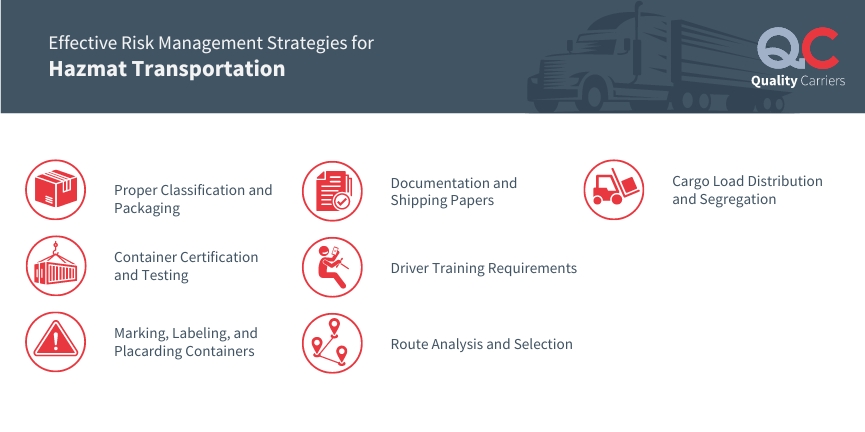
Elements of Hazmat Transportation Risk Management
Effective risk management strategies encompass:
1. Proper Classification and Packaging
Hazmat materials are classified based on their properties, such as flammability, toxicity, and reactivity. They must be packaged in containers that are compatible with the material and designed to withstand transportation conditions. For example, corrosive materials may require packaging in containers resistant to corrosion, while flammable liquids may need containers with proper ventilation to prevent pressure build-up.
2. Container Certification and Testing
Containers used for hazmat transportation must meet regulatory standards and undergo testing to ensure their structural integrity and resistance to leaks or breaches. This includes certification by authorized agencies and periodic inspections to verify compliance with safety requirements.
3. Marking, Labeling, and Placarding Containers:
According to regulatory guidelines, containers carrying hazardous materials must be visibly marked, labeled, and placarded with standardized symbols and information. This includes labels indicating the contents, associated hazards, handling instructions, and emergency contact information to facilitate safe handling and response in case of accidents.
4. Documentation and Shipping Papers
Accurate and detailed documentation is required for hazmat shipments to provide essential information to carriers, handlers, and emergency responders. This includes shipping papers, manifests, and emergency response information, such as the material’s proper shipping name, UN identification number, hazard class, and quantity.
5. Driver Training Requirements
Personnel involved in hazmat transportation must undergo specialized training to ensure they are familiar with the hazmat materials they are transporting and equipped to handle emergencies. Training covers proper handling, loading, and unloading procedures, emergency response protocols, and regulatory compliance.
6. Route Analysis and Selection
Hazmat shipments require careful route planning to minimize risks and ensure compliance with regulatory requirements. Route analysis considers traffic conditions, road infrastructure, proximity to population centers, and environmentally sensitive areas to identify the safest and most efficient transportation route.
7. Cargo Load Distribution and Segregation
Proper loading and segregation of hazmat cargo are critical to prevent accidents and minimize the risk of hazardous materials coming into contact with incompatible substances. Cargo should be securely stowed and separated according to compatibility to avoid reactions or spills during transportation.
8. Emergency Response Plans
Effective emergency response plans outline procedures for responding to incidents or accidents involving hazmat materials during transportation. This includes protocols for containment, evacuation, notification of authorities, and coordination with emergency responders to mitigate risks and minimize the impact on public safety and the environment.
Technological Advances in Risk Management
Technological advancements have revolutionized risk management in hazmat transportation, offering innovative solutions to enhance safety and efficiency. Some vital technological advances include:
1. GPS Tracking and Telematics: Think of GPS trackers like those on your phone. They help monitor hazmat shipments in real time, allowing us to know where they are and if they’re on the right path.
2. Remote Sensing and Monitoring: Imagine using drones or satellites to monitor the road ahead. These tools help us spot dangers like bad weather or rough terrain to avoid accidents.
3. Predictive Analytics and AI: It’s like having a crystal ball that predicts the future! By analyzing past data, computers can tell us when something might go wrong, helping us prepare for it.
4. Smart Sensors and IoT Devices are like tiny detectives inside containers. They monitor temperature and pressure and send alerts if something seems off, helping us prevent spills or leaks.
5. Simulation and Modeling Software: Picture playing a video game that simulates hazmat transportation scenarios. It helps us practice what to do in emergencies, so we’re ready to handle them.
6. Blockchain Technology: Imagine a super-secure digital diary that records every step of the hazmat journey. This helps keep track of things and ensures everyone follows the rules.
7. Mobile Applications and Communication Platforms are like walkie-talkies for hazmat teams. They help everyone stay connected, share important info, and coordinate actions quickly in case of emergencies.
Hazmat transportation presents inherent risks that necessitate proactive risk management measures. By adhering to regulations, implementing best practices, and leveraging technological advancements, stakeholders can enhance safety and minimize the impact of hazmat incidents.
FAQs
How are hazardous materials classified for transportation?
Hazardous materials are classified based on physical and chemical properties, potential risks, and regulatory requirements. This classification helps determine the appropriate packaging, labeling, and handling procedures during transportation.
What training do hazmat transport personnel undergo?
Hazmat transport personnel undergo specialized training to handle and transport hazardous materials safely. This includes understanding regulatory requirements, identifying hazard classes, using protective equipment, and responding to emergencies.
What role do emergency response plans play in hazmat transportation risk management?
Emergency response plans are crucial in hazmat transportation to mitigate risks and avoid incidents. These plans outline procedures for responding to spills, leaks, fires, or other emergencies, ensuring a coordinated and effective response to protect public safety and the environment.
